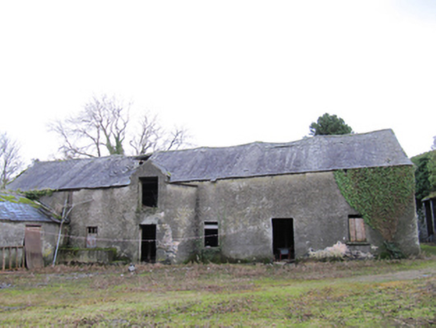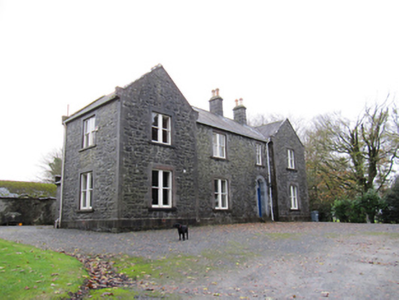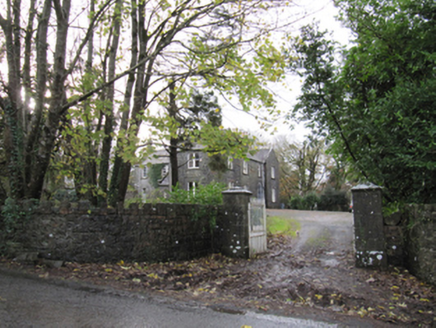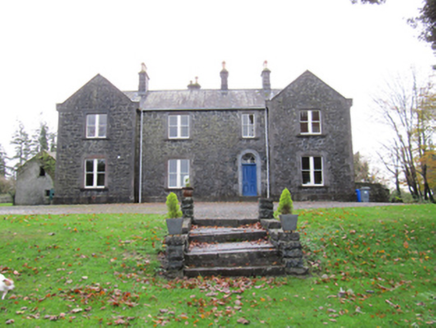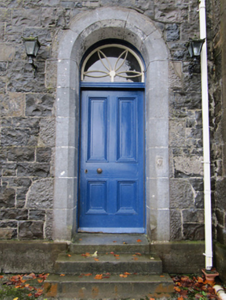Survey Data
Reg No
30410025
Rating
Regional
Categories of Special Interest
Architectural, Historical
Previous Name
Redmount originally Redmounthill Farm
Original Use
Farm house
In Use As
House
Date
1850 - 1860
Coordinates
190026, 219643
Date Recorded
18/11/2009
Date Updated
--/--/--
Description
Detached four-bay two-storey farm house, built c.1855, having slightly advanced gabled end bays to front (north) elevation, two-bay west return elevation, one-bay east return elevation, single-bay block to east of and flush with latter, and with three-bay return to east again, with short separation between latter and single-bay single-storey porch to rear of east end of front block. Pitched slate roofs with cut limestone chimneystacks with terracotta and ceramic chimneypots. Cut-stone copings. Cut rough-faced snecked limestone walls with cut-stone plinth course and quoins, to front and east elevations, rendered walls elsewhere. Square-headed window openings throughout, with cut-stone surrounds and sills and timber sliding sash windows. Bipartite one-over-one pane windows to front elevation and east elevation of front block, horizontal-pane windows elsewhere, three-storey block having bipartite windows to middle bay and three-over-three-pane windows to ground floor, vertical six-over-six pane windows to rear elevation, and one-over-one pane to rear porch. Round-headed door opening with chamfered cut-stone surround with timber panelled door having decorative petal fanlight and cut-stone steps. Yard to rear with multiple-bay single- and two-storey outbuildings, some derelict or ruinous, having pitched slate roofs, rendered walls, and square-headed door openings. Largest building has pitching door with gabled dormer roof. Roofless ruinous remains of outbuilding to south-east, having external staircase, snecked cut-stone walls and square-headed openings with cut-stone dressings. Wrought-iron gate with dressed monolithic piers to south-east. Decorative cast-iron double-leaf gate to site entrance to north-east with square-plan cut-stone piers with pointed caps, with snecked quadrant walls and boundary walls with crenellated copings.
Appraisal
This was one of several large farmsteads built by Allan Pollok, the local landlord, in the latter half of the nineteenth century, in an attempt to attract tenant farmers with capital to invest in land improvements and labour. Following his purchase of lands from the Eyre and West estates, through the Encumbered Estates Court, Pollok’s attempts to change traditional tenure and agrarian models by buying out the interest of smaller tenant farmers and re-employing them as labourers met with considerable resistance. Nonetheless, a contemporary account stated that Pollok built 40 stewards', tradesmen's, and labourers' cottages, as well as eight farmhouses, tradesmen's premises, and mills. A particularly large-scale farm house, the advance and recession of the façades and the multiple gables are typical of the Victorian era. The timber sash windows provide depth and texture to the elevations, and those with the horizontal glazing bars are somewhat unusual. The use of snecked limestone walls with cut-stone dressings indicates the wealth and capital available to Allan Pollok, as well as the skills of nineteenth-century stonemasons. The extensive outbuildings to the rear, although some in poor condition, add context to the site.
